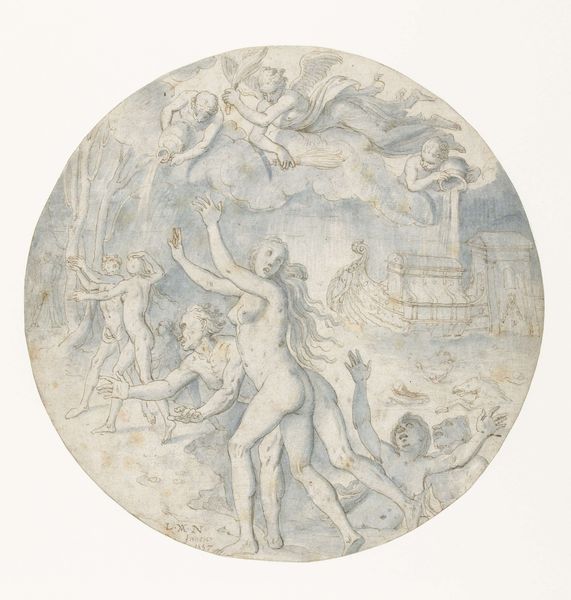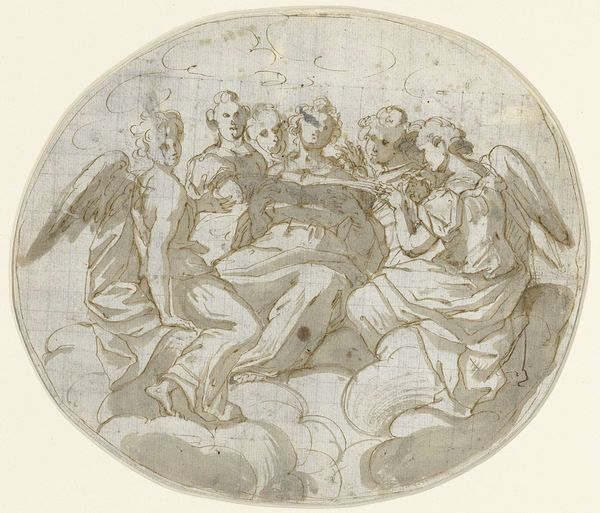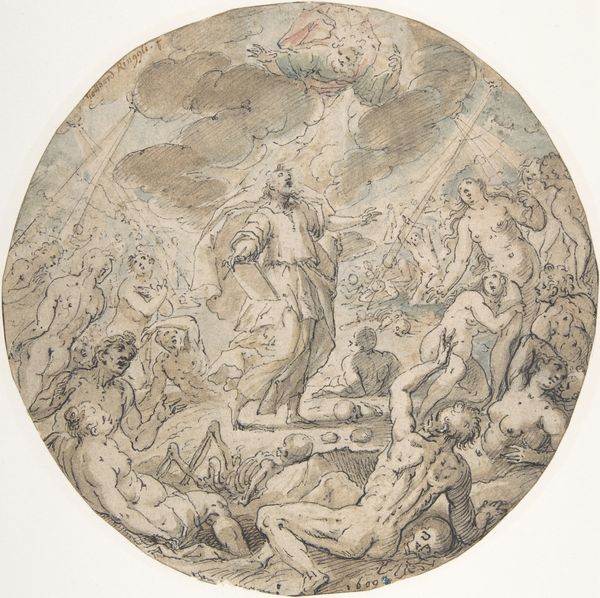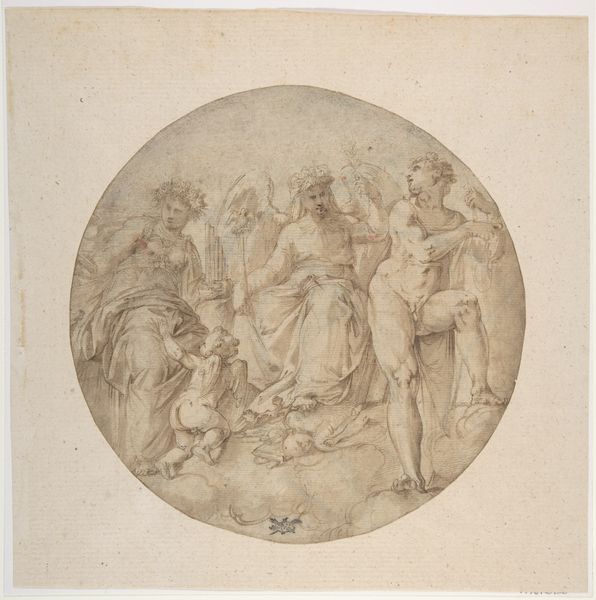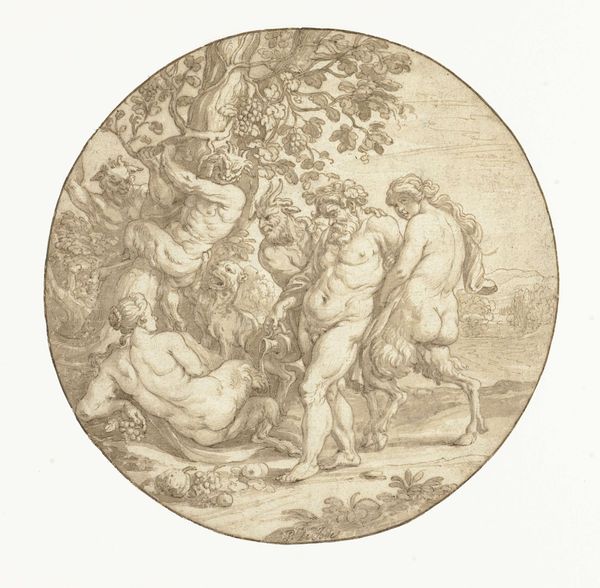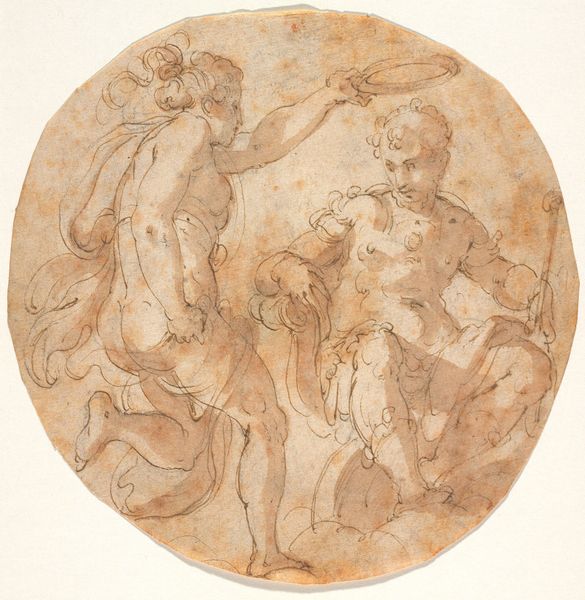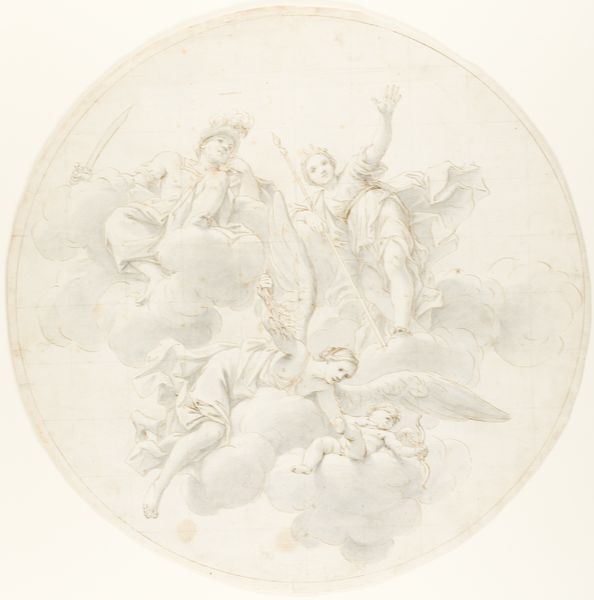
drawing, paper, ink, charcoal
#
drawing
#
allegory
#
sculpture
#
charcoal drawing
#
mannerism
#
figuration
#
paper
#
11_renaissance
#
oil painting
#
ink
#
charcoal
#
nude
Copyright: Rijks Museum: Open Domain
Curator: Let's consider this drawing, "The Four Elements" by Hendrik van Balen I, dating from 1600-1610. The Rijksmuseum holds it. The artwork consists of charcoal, ink and heightened with white on paper. Editor: Thanks! The composition looks classical. It's also somewhat melancholic given the subdued colors. What's striking to me is that it’s a drawing, not a painting or sculpture as one might expect for such a grand theme. What are your initial thoughts? Curator: It's crucial to understand the material conditions of its making. Drawings like this weren’t always considered finished “art” in the modern sense. Often, they were preparatory works or studies. How does seeing this as a process-oriented piece, a step in the creation of something else, shift your perception? Editor: That's an interesting point. So, you are saying the drawing in itself wasn’t necessarily seen as the *end* product? Curator: Precisely. Think about the social context. Who commissioned such a piece, and what purpose would it serve beyond aesthetic pleasure? This drawing becomes more compelling when seen in terms of production—the labour, the accessibility of materials like charcoal and ink versus costly oils, the possible role in a larger workshop. Could this be a prototype for something grander? Editor: I hadn't considered that! It's easy to get caught up in the art *as* an object, forgetting about all the steps taken to get there, the 'means of production'. Perhaps it was a reference model used in an engraving production? Curator: Exactly! We need to analyze the production. Think about where the artist acquired his materials, what types of workshops he engaged with, or which distribution chain was involved in making it accessible to the masses. Looking at these variables opens it to fresh perspectives. Editor: Fascinating. I'll never look at preliminary sketches the same way. Curator: The social and material context informs its meaning just as much as the iconography. Editor: Indeed, thinking about the material constraints and how that affects the process sheds a different light. Thanks!
Comments
No comments
Be the first to comment and join the conversation on the ultimate creative platform.

